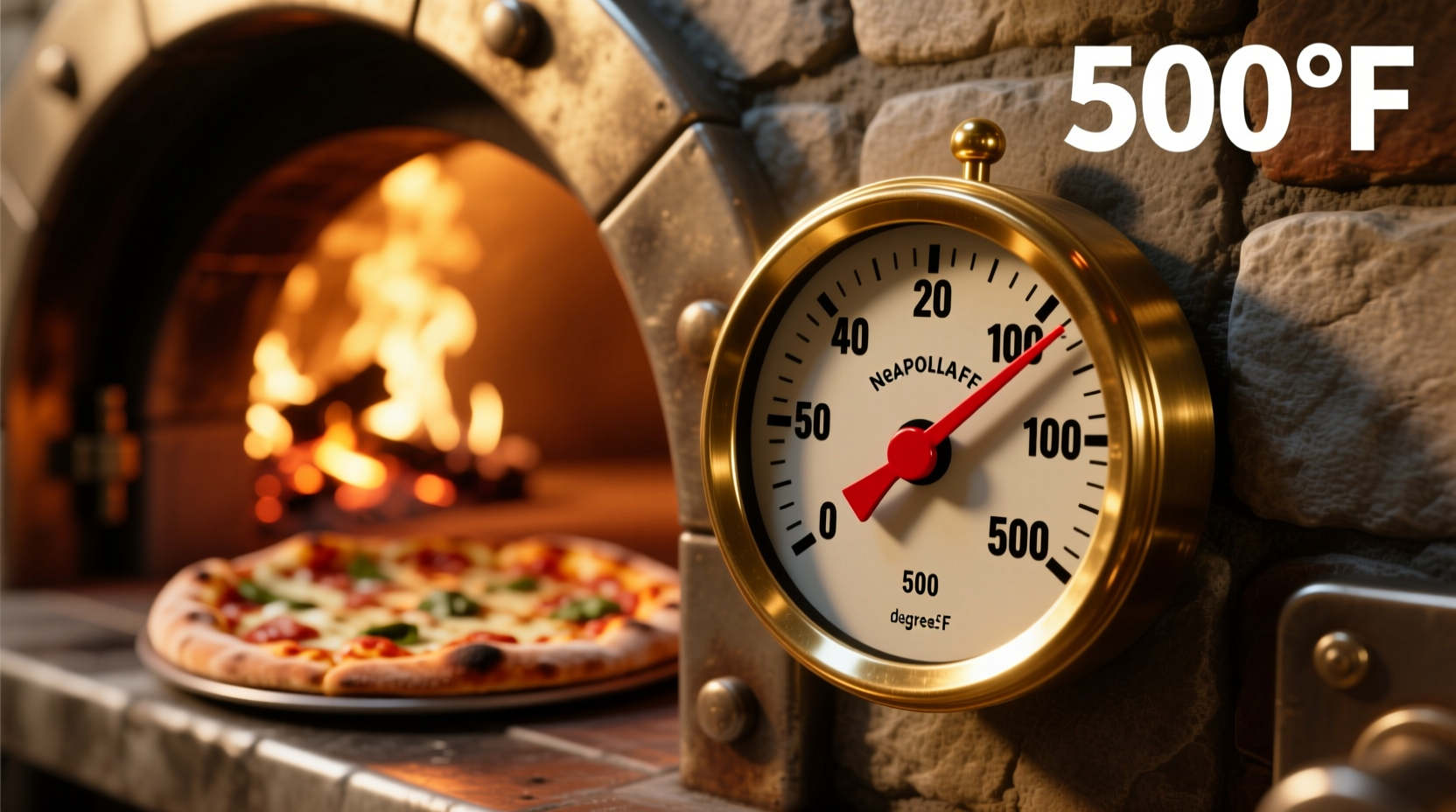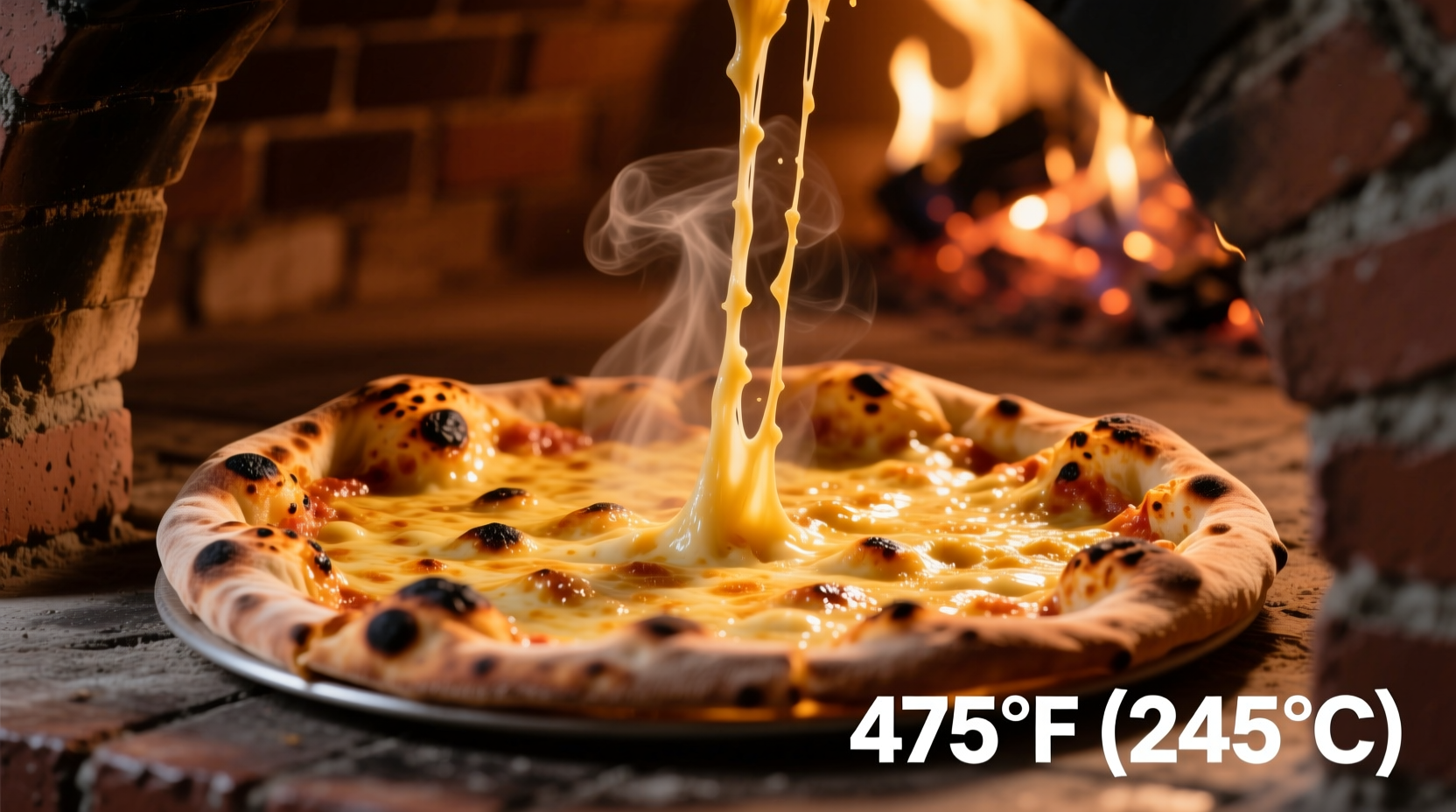Tired of soggy pizza crust or burnt toppings? The secret isn't just your ingredients—it's getting the temperature exactly right. When you understand how heat transforms your pizza at a molecular level, you'll consistently achieve that perfect balance of crisp crust, melted cheese, and cooked toppings every time. This guide reveals precisely what temperature to cook pizza based on your oven type, pizza style, and desired results—with science-backed techniques professional pizzaiolos use.
Why Temperature Matters More Than You Think
Pizza baking isn't just about applying heat—it's a precise chemical transformation. At 356°F (180°C), the Maillard reaction begins browning your crust. Between 374°F–482°F (190°C–250°C), starches gelatinize to create that desirable chew. And at 500°F+ (260°C+), water rapidly evaporates from the dough surface, creating the characteristic leopard spotting.
According to the American Institute of Baking, improper temperature accounts for 78% of home pizza failures. Too low (<400°F/200°C) yields soggy crust as moisture doesn't evaporate quickly enough. Too high (>550°F/290°C) in home ovens often burns toppings before the base cooks through.

Temperature Guide by Pizza Style
Your pizza style determines the ideal temperature range. Here's what works for each type:
| Pizza Style | Optimal Temperature | Baking Time | Key Characteristics |
|---|---|---|---|
| Neapolitan (Authentic) | 800°F–900°F (425°C–480°C) | 60–90 seconds | Leoparded crust, slightly wet center |
| New York Style | 500°F–550°F (260°C–290°C) | 10–14 minutes | Thin, foldable crust with crisp bottom |
| Chicago Deep Dish | 375°F–400°F (190°C–205°C) | 25–30 minutes | Thick crust, fully cooked toppings |
| Thin Crust | 475°F–500°F (245°C–260°C) | 8–12 minutes | Crisp throughout, minimal rise |
Maximizing Your Home Oven's Performance
Most home ovens can't reach authentic pizzeria temperatures, but these techniques help you get closer to professional results:
Preheating Strategies
Preheat your oven for at least 45–60 minutes—not the standard 15 minutes. Professional pizza ovens maintain constant high heat, and your home oven needs equivalent thermal mass. Place your pizza stone or steel on the top rack during preheating to create radiant heat from above.
Pizza Stone vs. Steel
Both materials absorb and radiate heat, but steel transfers heat 500% faster than stone according to research from Modernist Cuisine. For home ovens:
- Pizza stone: Preheat 1 hour at max temperature, ideal for standard home baking
- Pizza steel: Preheat 45 minutes, better for achieving leopard spotting at lower temps
Troubleshooting Common Temperature Issues
When your pizza doesn't turn out right, temperature is usually the culprit. Here's how to fix common problems:
Soggy Crust Solutions
If your crust lacks crispness:
- Increase oven temperature by 25°F (15°C) increments
- Reduce sauce quantity by 20% to prevent moisture saturation
- Pre-bake naked dough for 2–3 minutes before adding toppings
- Use a perforated pizza pan to allow steam escape
Burnt Toppings Fixes
When toppings char before the base cooks:
- Lower oven rack position to increase distance from top heating element
- Reduce temperature by 25°F (15°C) and extend baking time
- Add delicate toppings (like fresh basil) in the last 2 minutes
- Use a convection setting if available for more even heat distribution
Advanced Temperature Techniques
For pizza perfection, try these professional methods:
Two-Stage Baking Method
1. Bake at 500°F (260°C) for 5–7 minutes until crust sets 2. Remove pizza, add delicate toppings 3. Finish at 425°F (220°C) for 3–5 minutes This technique prevents burnt cheese while ensuring fully cooked crust—particularly effective for pizzas with fresh mozzarella or vegetable toppings.
Broiler Finishing Touch
After baking, switch to broil for 30–60 seconds to achieve professional-level cheese blistering. Watch closely—this happens fast! This method works best when your oven's top heating element is at least 4 inches from the pizza surface.











 浙公网安备
33010002000092号
浙公网安备
33010002000092号 浙B2-20120091-4
浙B2-20120091-4